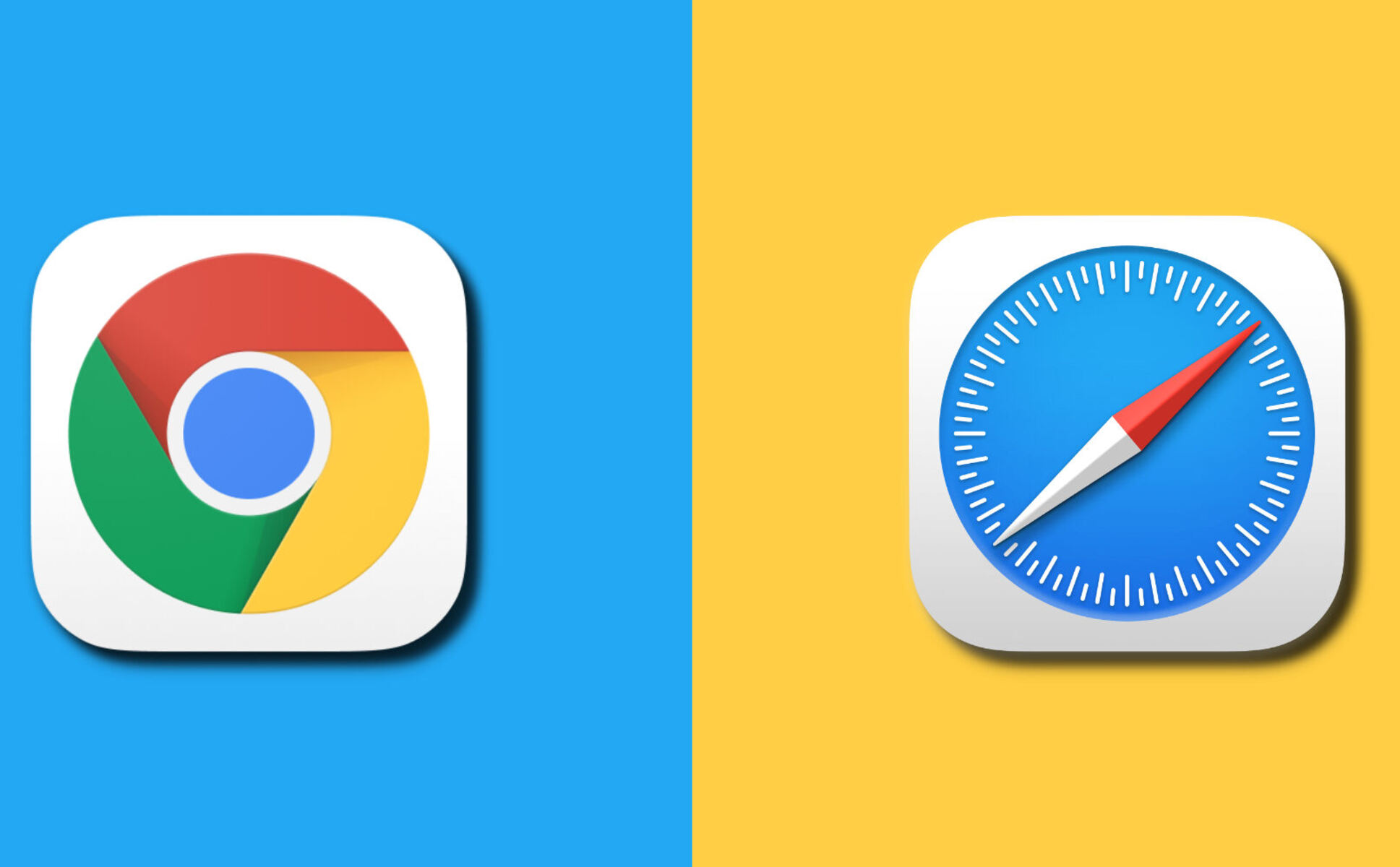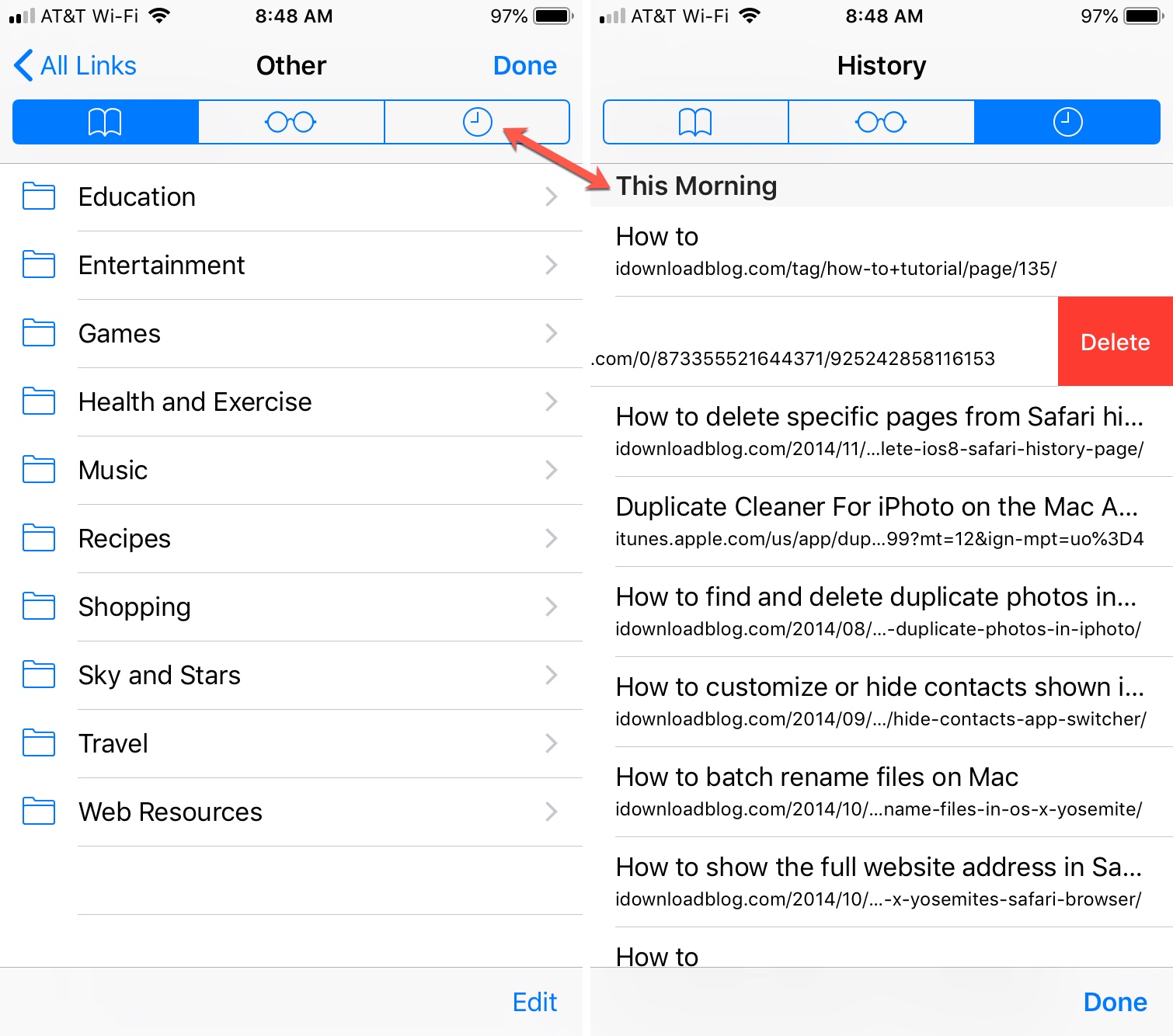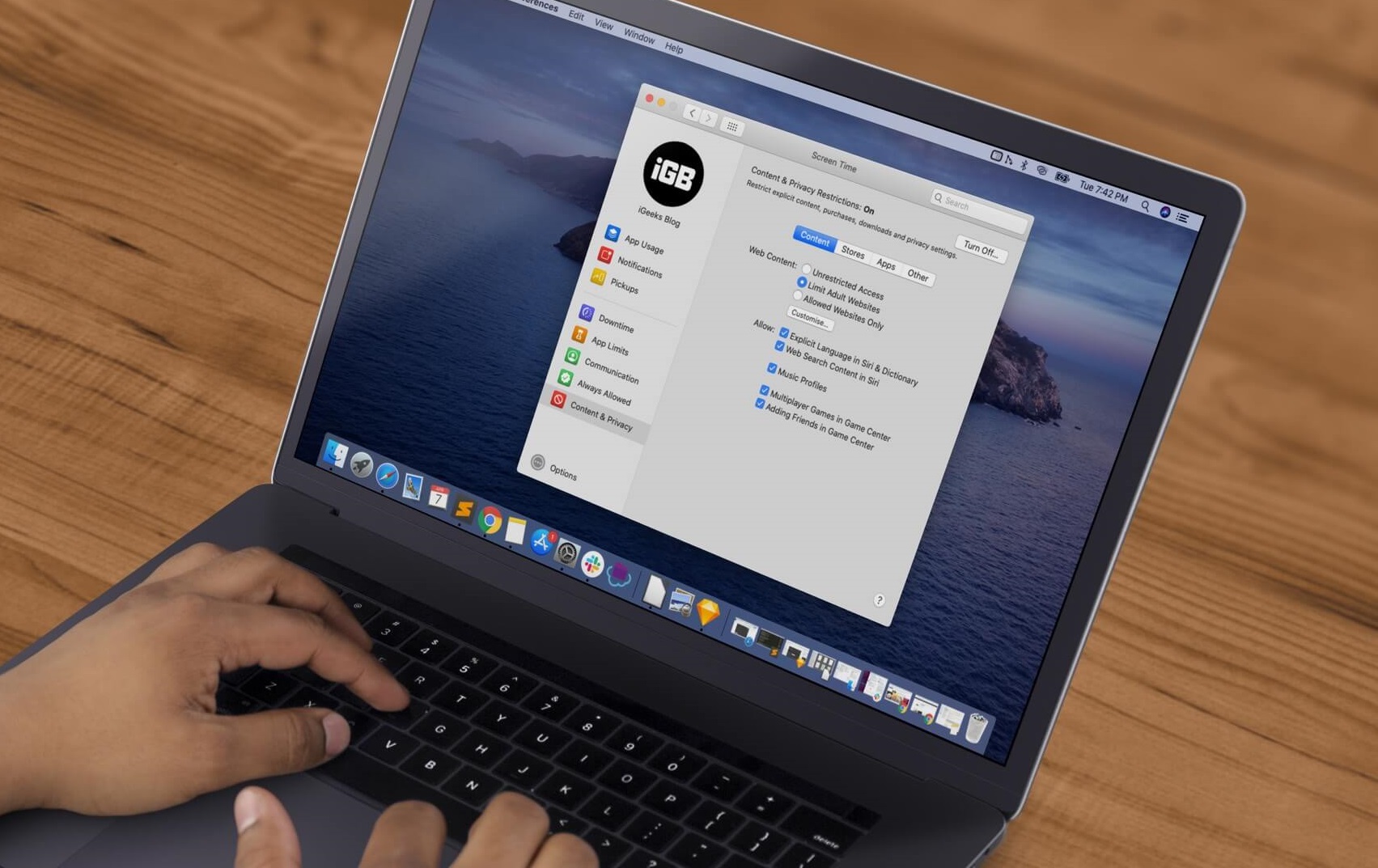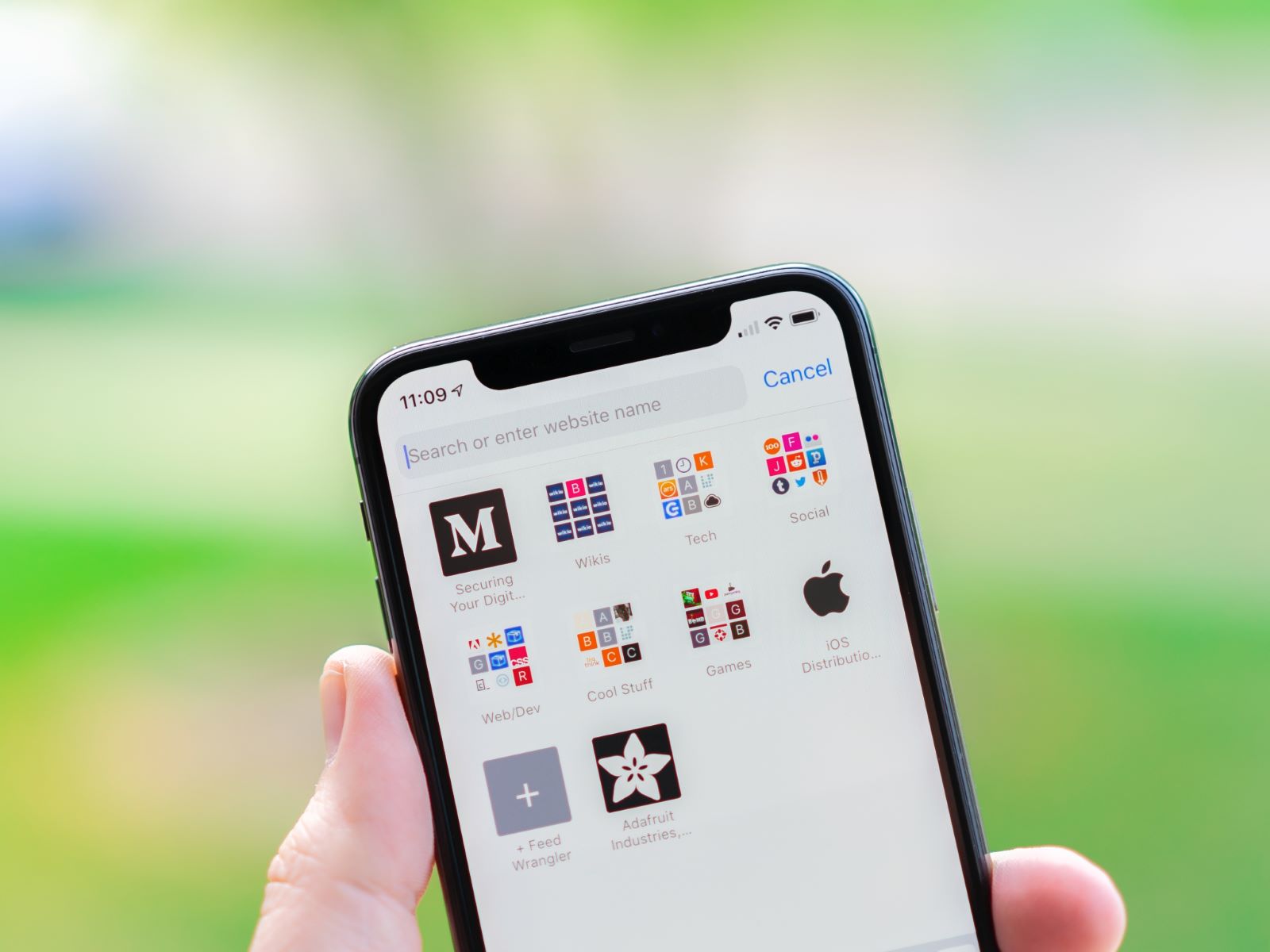Introduction
When it comes to web browsing, the choice of browser can significantly impact your online experience. With a plethora of options available, two of the most popular browsers, Safari and Chrome, often find themselves at the center of the debate. Each browser boasts unique features and functionalities, catering to the diverse needs of users. Understanding the nuances of these browsers is crucial in making an informed decision about which one best aligns with your preferences and requirements.
Safari, developed by Apple, comes pre-installed on all Apple devices, including Mac, iPhone, and iPad. Its seamless integration with the Apple ecosystem offers a cohesive browsing experience, characterized by fluid synchronization across devices. On the other hand, Chrome, a product of Google, has gained widespread popularity for its speed, versatility, and extensive range of extensions. As users navigate the digital landscape, they often find themselves deliberating between these two powerhouses, weighing the pros and cons to determine which browser reigns supreme in their browsing endeavors.
In this comprehensive comparison, we delve into the intricacies of Safari and Chrome, dissecting their user interfaces, performance capabilities, security measures, privacy features, customization options, and compatibility with various platforms and web technologies. By shedding light on the strengths and weaknesses of each browser, we aim to equip users with the knowledge necessary to make an informed choice that aligns with their browsing habits and preferences. So, let's embark on this journey to unravel the nuances of Safari and Chrome, ultimately empowering users to navigate the digital realm with confidence and efficiency.
User Interface
The user interface of a web browser serves as the gateway to the digital realm, shaping the overall browsing experience. Safari and Chrome, two prominent contenders in the browser arena, exhibit distinct user interfaces, each designed to optimize user interaction and navigation.
Safari:
Safari, renowned for its sleek and minimalist design, embodies the quintessential Apple aesthetic. The interface is characterized by its clean layout, uncluttered toolbar, and intuitive navigation, reflecting Apple's commitment to simplicity and elegance. The unified address and search bar, known as the "Smart Search Field," streamlines the browsing experience, allowing users to seamlessly enter URLs and conduct web searches from a single location. Furthermore, Safari's tab management system facilitates effortless tab organization, enabling users to navigate between multiple web pages with ease. The Reader View feature enhances readability by eliminating distractions and presenting content in a clean, uncluttered format, catering to users who prioritize a seamless reading experience.
Chrome:
In contrast, Chrome's user interface embodies a modern and dynamic design, aligning with Google's emphasis on speed and efficiency. The browser's tab-centric layout promotes multitasking, empowering users to manage numerous tabs efficiently. Chrome's Omnibox, a combination of the address bar and search bar, offers a unified platform for entering URLs, conducting searches, and accessing bookmarks, streamlining the browsing process. Additionally, Chrome's customizable homepage, featuring quick access to frequently visited sites and personalized shortcuts, enhances user convenience and accessibility. The browser's synchronization capabilities, facilitated through a Google account, ensure seamless integration across devices, allowing users to access their browsing history, bookmarks, and preferences from any device with Chrome installed.
Comparison:
While Safari exudes a seamless and refined interface, Chrome's dynamic and customizable layout caters to users seeking versatility and personalization. The choice between the two ultimately hinges on individual preferences regarding design aesthetics, navigation efficiency, and the level of customization desired.
In essence, the user interface of a browser plays a pivotal role in shaping the overall browsing experience, influencing user satisfaction and productivity. Whether users gravitate towards Safari's minimalist elegance or Chrome's dynamic versatility, the user interface serves as the gateway to the digital landscape, setting the stage for a seamless and immersive browsing journey.
Performance
Performance is a critical aspect that significantly impacts the browsing experience, encompassing speed, responsiveness, resource utilization, and overall efficiency. When comparing the performance of Safari and Chrome, several key factors come into play, influencing users' satisfaction and productivity.
Safari:
Safari, optimized for Apple's ecosystem, is lauded for its exceptional performance on macOS, iOS, and iPadOS devices. The browser's rendering engine, known for its efficiency, delivers swift page loading times and seamless navigation, contributing to a fluid and responsive browsing experience. Safari's integration with Apple's hardware and software ecosystem enables hardware-accelerated rendering, leveraging the full potential of Apple's devices to deliver a smooth and efficient browsing experience.
Furthermore, Safari's energy efficiency sets it apart, especially on Apple laptops and mobile devices. The browser's low power consumption and optimized resource utilization contribute to prolonged battery life, making it an attractive choice for users prioritizing energy efficiency and battery longevity.
Chrome:
Chrome, renowned for its speed and performance, leverages the powerful Blink rendering engine to deliver rapid page loading, smooth scrolling, and responsive web interactions. The browser's multi-process architecture enhances stability and performance, segregating tabs and processes to prevent one tab from impacting the performance of others. This approach minimizes the risk of browser crashes and ensures a consistent browsing experience, even when handling resource-intensive web applications and multimedia content.
Chrome's extensive support for web standards and cutting-edge technologies further amplifies its performance capabilities, enabling users to seamlessly engage with modern web content and applications without compromising speed or responsiveness.
Comparison:
When evaluating performance, Safari excels in delivering an optimized and energy-efficient browsing experience within the Apple ecosystem. Its seamless integration with Apple's hardware and software ecosystem contributes to its exceptional performance on Apple devices. On the other hand, Chrome's speed, stability, and support for web technologies position it as a robust performer across various platforms, catering to users seeking a fast and versatile browsing experience.
In essence, the performance comparison between Safari and Chrome underscores the significance of speed, efficiency, and resource optimization in shaping the overall browsing experience. Whether users prioritize energy efficiency and seamless integration with Apple devices or seek speed, stability, and support for modern web technologies, the performance capabilities of Safari and Chrome play a pivotal role in determining the browser that best aligns with their browsing preferences and requirements.
Security
Security stands as a cornerstone of the browsing experience, encompassing measures implemented to safeguard users from online threats, privacy breaches, and malicious activities. When evaluating the security features of Safari and Chrome, it is imperative to delve into their respective approaches to protecting users' sensitive information, mitigating security vulnerabilities, and fortifying defenses against cyber threats.
Safari, developed within the Apple ecosystem, prioritizes robust security measures to uphold user privacy and protect against potential risks. The browser's Intelligent Tracking Prevention (ITP) feature aims to mitigate cross-site tracking, thereby enhancing user privacy by restricting the ability of advertisers to track user activity across websites. Additionally, Safari's built-in protection against malicious websites and phishing attempts, powered by the Safe Browsing feature, serves as a proactive defense mechanism, alerting users and preventing access to potentially harmful sites.
Furthermore, Safari's stringent approach to extensions and plugins contributes to its security posture, as the browser enforces strict guidelines for third-party developers, ensuring that extensions undergo rigorous review processes to mitigate the risk of malicious or intrusive add-ons compromising user security.
On the other hand, Chrome, known for its robust security architecture, leverages multiple layers of defense to safeguard users against evolving cyber threats. The browser's Site Isolation feature, which isolates each website into a separate process, enhances security by mitigating the impact of potential vulnerabilities, such as Spectre and Meltdown, and reducing the risk of cross-site data breaches.
Moreover, Chrome's integration of the Safe Browsing API, akin to Safari's Safe Browsing feature, provides users with real-time protection against phishing sites and malicious downloads, bolstering their defenses against online threats. The browser's automatic updates mechanism ensures that users benefit from the latest security patches and enhancements, fortifying Chrome's resilience against emerging vulnerabilities and exploits.
In the realm of security, both Safari and Chrome exhibit a steadfast commitment to protecting users from online risks, privacy infringements, and malicious activities. While Safari emphasizes stringent privacy measures and seamless integration with the Apple ecosystem, Chrome's multi-layered security approach and proactive defense mechanisms position it as a robust contender in the realm of browser security.
In essence, the security comparison between Safari and Chrome underscores the pivotal role of security measures in shaping the browsing experience. Whether users prioritize stringent privacy protections and seamless integration with the Apple ecosystem or seek multi-layered security defenses and proactive threat mitigation, the security features of Safari and Chrome play a crucial role in empowering users to navigate the digital landscape with confidence and peace of mind.
Privacy
Privacy stands as a fundamental pillar of the browsing experience, encompassing the protection of users' personal data, the prevention of unauthorized tracking, and the mitigation of privacy infringements. When evaluating the privacy features of Safari and Chrome, it is imperative to delve into their respective approaches to safeguarding users' sensitive information and empowering them with control over their online privacy.
Safari, deeply rooted within the Apple ecosystem, places a strong emphasis on preserving user privacy through a series of robust measures. The browser's Intelligent Tracking Prevention (ITP) feature stands as a testament to its commitment to mitigating cross-site tracking, thereby enhancing user privacy by restricting the ability of advertisers and other entities to track user activity across websites. By intelligently managing cookies and preventing cross-site tracking, Safari empowers users to navigate the web without the pervasive presence of targeted ads and invasive tracking mechanisms, fostering a more private and personalized browsing experience.
Moreover, Safari's implementation of Privacy Report provides users with valuable insights into the trackers that the browser has blocked, thereby enhancing transparency and awareness regarding potential privacy risks. This proactive approach to privacy empowers users to make informed decisions about their online activities while fostering a heightened sense of control over their digital footprint.
In contrast, Chrome, while prioritizing security, has faced scrutiny regarding its approach to user privacy. The browser's reliance on user data for personalized advertising and its association with Google's expansive ecosystem have raised concerns about data collection and user tracking. However, Chrome has taken steps to enhance user privacy through initiatives such as the Privacy Sandbox, which aims to develop privacy-preserving mechanisms for personalized advertising without compromising individual user data.
Furthermore, Chrome's implementation of Enhanced Safe Browsing, which provides real-time protection against phishing sites and malicious downloads, contributes to bolstering user privacy by fortifying defenses against online threats. The browser's emphasis on transparency and user control, manifested through features like the Privacy Checkup tool, enables users to review and manage their privacy settings, thereby fostering a more informed and empowered approach to online privacy.
In the realm of privacy, Safari's steadfast commitment to mitigating cross-site tracking and empowering users with transparency and control underscores its dedication to preserving user privacy within the Apple ecosystem. On the other hand, Chrome's strides towards enhancing user privacy through initiatives such as the Privacy Sandbox and Enhanced Safe Browsing demonstrate its responsiveness to privacy concerns and its commitment to fortifying user defenses against online threats.
Ultimately, the privacy comparison between Safari and Chrome underscores the pivotal role of privacy measures in shaping the browsing experience. Whether users prioritize stringent privacy protections and transparency or seek privacy-preserving mechanisms and enhanced user control, the privacy features of Safari and Chrome play a crucial role in empowering users to navigate the digital landscape with confidence and peace of mind.
Customization
Customization serves as a defining aspect of the browsing experience, allowing users to tailor their browser environment to align with their preferences and browsing habits. When exploring the customization capabilities of Safari and Chrome, it becomes evident that each browser offers distinct features and functionalities, catering to users' desire for personalization and control over their browsing environment.
Safari, characterized by its seamless integration within the Apple ecosystem, provides users with a range of customization options to personalize their browsing experience. The browser's extensive collection of extensions, available through the Mac App Store and Safari Extensions Gallery, empowers users to augment their browsing environment with tools and enhancements tailored to their specific needs. From ad blockers and productivity tools to content management extensions, Safari's diverse extension ecosystem enables users to customize their browsing experience to suit their individual preferences and requirements.
Furthermore, Safari's support for customizing the start page, including the ability to set a custom background image and organize favorite sites, enhances user personalization and accessibility. Users can effortlessly arrange and access their frequently visited sites, creating a tailored browsing environment that aligns with their browsing habits and preferences. Additionally, Safari's Reader View feature, which presents web content in a distraction-free format, allows users to customize their reading experience, enhancing readability and reducing visual clutter.
On the other hand, Chrome, renowned for its versatility and extensive range of extensions, empowers users with a wealth of customization options to personalize their browsing environment. The Chrome Web Store, a hub for extensions, themes, and apps, offers users a diverse array of tools and enhancements to augment their browsing experience. From theme customization to productivity-boosting extensions and advanced developer tools, Chrome's robust extension ecosystem caters to users seeking to tailor their browsing environment to their specific needs and preferences.
Moreover, Chrome's support for customizing the new tab page, including the ability to set custom backgrounds, pin favorite sites, and access personalized shortcuts, enhances user control and accessibility. This level of customization enables users to curate a personalized new tab page that aligns with their browsing habits and provides quick access to frequently visited sites and essential tools.
In essence, the customization comparison between Safari and Chrome underscores the significance of personalization and user control in shaping the browsing experience. Whether users prioritize a seamless integration with the Apple ecosystem and a diverse collection of extensions or seek versatility, theme customization, and a robust extension ecosystem, the customization features of Safari and Chrome play a pivotal role in empowering users to tailor their browsing environment to suit their individual preferences and requirements.
Compatibility
Compatibility stands as a pivotal consideration when evaluating a web browser, encompassing its ability to seamlessly interact with various platforms, web technologies, and online content. The compatibility of a browser directly influences users' ability to access and engage with diverse web resources, applications, and multimedia content, shaping the breadth and depth of their browsing experience.
Safari, deeply entrenched within the Apple ecosystem, exhibits robust compatibility with macOS, iOS, and iPadOS, leveraging seamless integration to deliver a cohesive and unified browsing experience across Apple devices. The browser's optimization for Apple's hardware and software ecosystem ensures that users can harness the full potential of their devices, benefiting from enhanced performance, energy efficiency, and synchronization of browsing data and preferences. Furthermore, Safari's support for web standards and modern technologies enables users to engage with a wide array of web content and applications, fostering a versatile and immersive browsing experience within the Apple ecosystem.
On the other hand, Chrome, renowned for its cross-platform compatibility and extensive support for web technologies, caters to users seeking a versatile and expansive browsing experience. The browser's compatibility with various operating systems, including Windows, macOS, Linux, and Chrome OS, empowers users to seamlessly transition between different devices and platforms while maintaining a consistent browsing environment. Chrome's robust support for web standards, progressive web applications, and advanced web technologies ensures that users can engage with modern web content and applications without encountering compatibility barriers, fostering a seamless and immersive browsing journey.
In essence, the compatibility comparison between Safari and Chrome underscores the pivotal role of cross-platform support, web standards compliance, and seamless integration within respective ecosystems in shaping the browsing experience. Whether users prioritize seamless integration within the Apple ecosystem and optimized performance on Apple devices or seek cross-platform compatibility, support for modern web technologies, and a versatile browsing experience, the compatibility features of Safari and Chrome play a crucial role in empowering users to access and engage with diverse web resources, applications, and multimedia content.
Conclusion
In the realm of web browsing, the choice between Safari and Chrome hinges on a myriad of factors, each contributing to the overall browsing experience. As users navigate the digital landscape, the distinct characteristics of these browsers come to the forefront, shaping the preferences and requirements of individuals seeking an optimal browsing environment.
Safari, deeply ingrained within the Apple ecosystem, embodies a seamless and elegant browsing experience, characterized by its minimalist design, robust security measures, and seamless integration across Apple devices. The browser's emphasis on privacy, energy efficiency, and compatibility within the Apple ecosystem positions it as a compelling choice for users seeking a cohesive and unified browsing journey tailored to the intricacies of Apple's hardware and software ecosystem.
On the other hand, Chrome, renowned for its speed, versatility, and extensive range of extensions, caters to users seeking a dynamic and customizable browsing experience. The browser's multi-layered security approach, cross-platform compatibility, and robust performance capabilities position it as a formidable contender in the realm of web browsing, appealing to users with diverse preferences and browsing habits.
Ultimately, the choice between Safari and Chrome transcends a mere comparison of features and functionalities; it encapsulates the alignment of the browser with the individual preferences, habits, and ecosystem considerations of users. Whether users prioritize seamless integration within the Apple ecosystem, stringent privacy protections, and energy-efficient browsing or seek cross-platform compatibility, speed, and a versatile extension ecosystem, the decision between Safari and Chrome rests on the convergence of personal preferences, browsing habits, and ecosystem considerations.
As users embark on their browsing endeavors, armed with a deeper understanding of the nuances of Safari and Chrome, they are empowered to make an informed choice that resonates with their unique browsing preferences and requirements. Whether it's the seamless integration within the Apple ecosystem, the dynamic versatility of Chrome, or the specific features and functionalities that align with individual needs, the browsing journey is enriched by the ability to select a browser that harmonizes with the intricacies of one's digital experience.

























